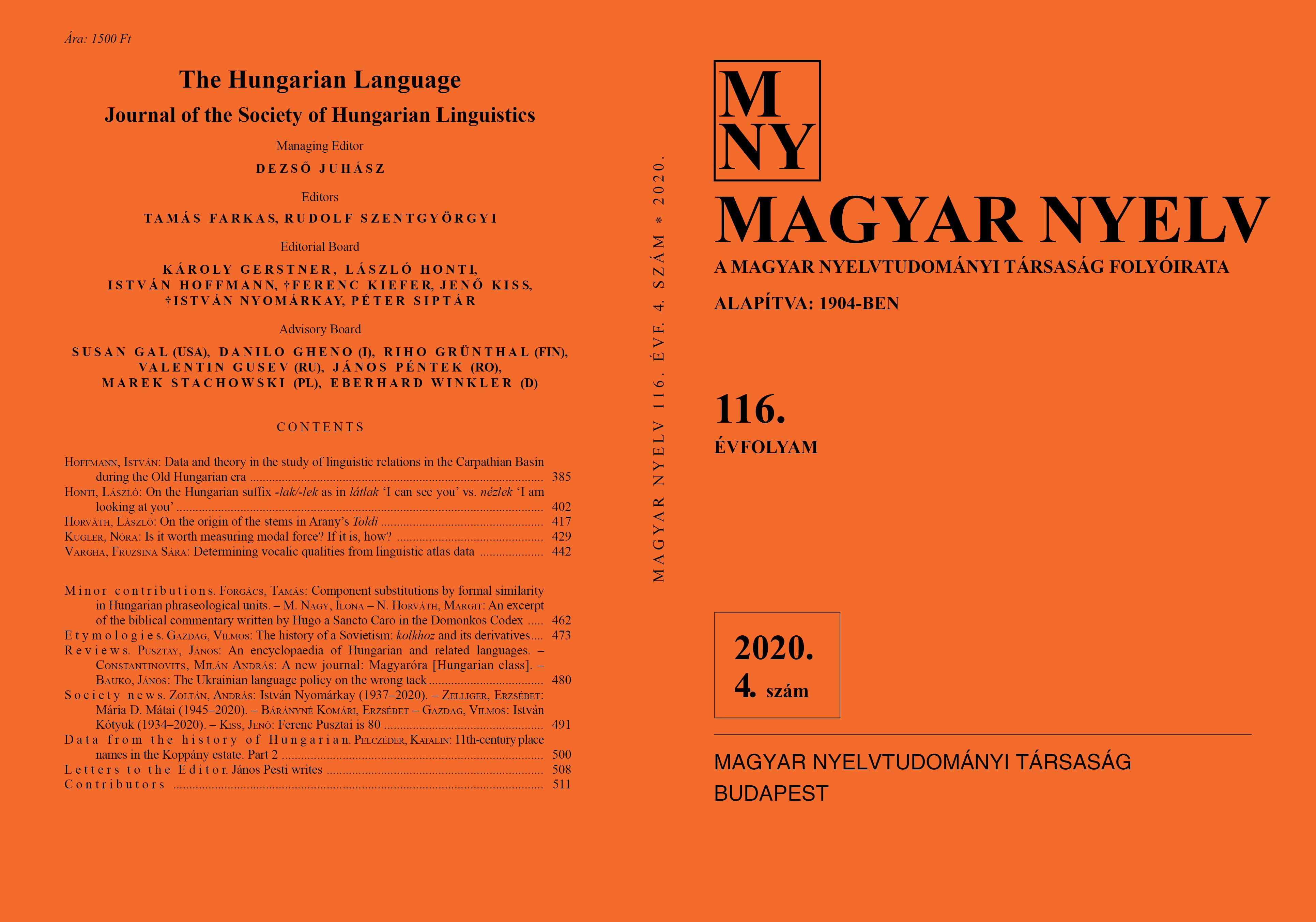Data and theory in the study of linguistic relations in the Carpathian Basin during the Old Hungarian era
DOI:
https://doi.org/10.18349/MagyarNyelv.2020.4.385Keywords:
historical toponomastics, toponym reconstruction, relative toponym chronology, Hungarian-Slavic contacts in the early Old Hungarian eraAbstract
The study of Old Hungarian toponyms has played an integral role in Hungarian research in historical linguistics for a long time. Recent decades have witnessed an increased scholarly attention to these linguistic elements again, influenced by a variety of factors. Findings in history (especially diplomatics and historical geography) enabled the inclusion of new sources in such studies and the strengthening of the onomastics approach offered more effective means for studies in historical linguistics. Etymological explanations have gradually been replaced by the method of toponym recon struction, which examines the genesis and changes of toponyms in a complex system of linguistic, social, and cultural relations. At the same time, the previously used chronological approach was replaced by the relative chronological assessment of various toponym types. The toponymic patterns of certain eras and regions may be drawn with the use of these two methods and this enables us to explore temporal and spatial relationships of languages used in a specific region. These studies may contribute to reviewing and refining our knowledge on the linguistic and ethnic relations of the Carpathian Basin from a historical perspective, while even more comprehensive findings can be expected as a result of cooperation with associated scholarly disciplines (especially history and archeology).
Downloads
Published
Issue
Section
License
Copyright (c) 2024 István Hoffmann

This work is licensed under a Creative Commons Attribution-NonCommercial-NoDerivatives 4.0 International License.
Magyar Nyelv is a Diamond Open Access periodical. Documents can be freely downloaded and duplicated in an electronic format, and can be used unchanged and with due reference to the original source. Such use must not serve commercial purposes. In the case of any form of dissemination and use, Hungarian Copyright Act LXXVI/1999 and related laws are to be observed. The electronic version of the journal is subject to the regulations of CC BY-NC-ND (Creative Commons – Attribution-NonCommercial-NoDerivatives).
The journal permits its authors, at no cost and without any temporal limitation, to make pre-print copies of their manuscripts publicly available via email or in their own homepage or that of their institution, or in either closed or free-for-all repositories of their institutions/universities, or other non-profit websites, in the form accepted by the journal editor for publication and even containing amendments on the basis of reviewers’ comments. When the authors publicize their papers in this manner, they have to warn their readers that the manuscript at hand is not the final published version of the work. Once the paper has been published in a printed or online form, the authors are allowed (and advised) to use that (post-print) version for the above purposes. In that case, they have to indicate the exact location and other data of the journal publication. The authors retain the copyright of their papers; however, in the case of an occasional secondary publication, the bibliographical data of the first publication have to be included.



